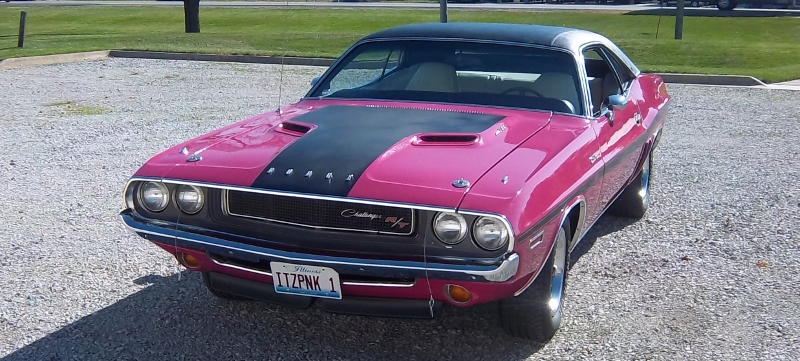
While Peak Brougham was, in my opinion, 1976 (last year of yuuuge GM B- and C-bodies; Cordobas, Grandes Prix, Monte Carlos, Elites, Cougars, need I say more), Peak Muscle Car was 1970. That vaunted first year of the Me Decade saw the wildest colors, options, myriad rally wheels and sport wheels, factory and aftermarket, Hemis, 440s, 427s, 429s and Hurst shifters. And there were two newly minted additions! The Plymouth Barracuda. And, today’s subject, the Dodge Challenger.
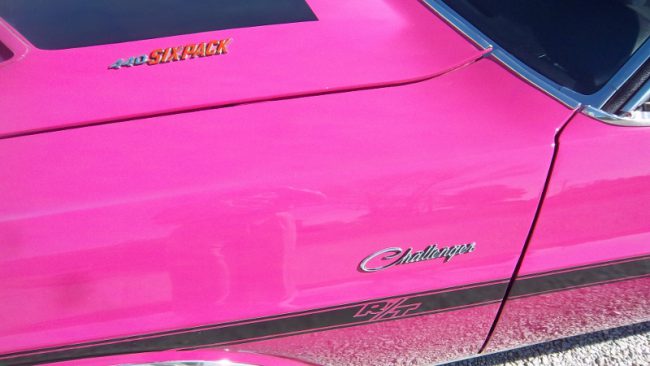
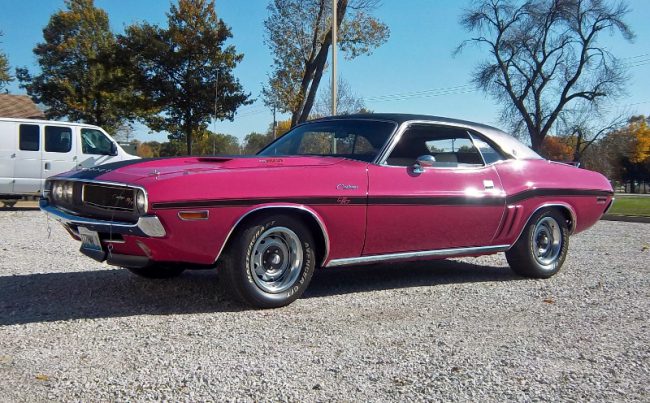
My family got into Mopars in the 1990s. As us three kids got bigger, the Volvo 740 wagons gave way to a special-ordered ’92 Grand Caravan ES in blinding white with all wheel drive. Then my dad got a new ’95 Grand Cherokee Orvis Edition-Mopar’s version of the Eddie Bauer Explorers. At the same time my brother got into vintage ’70s Mopar muscle, and declared his first car would be one of them.
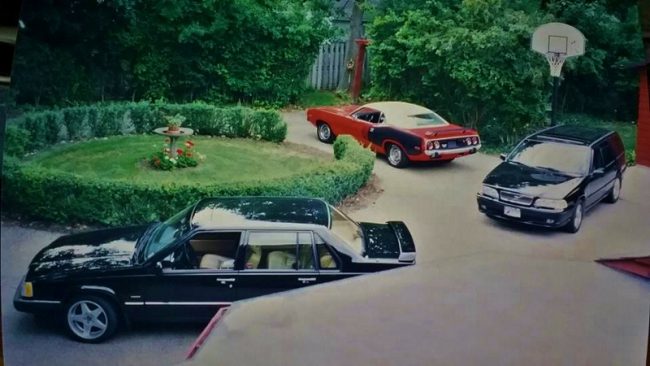
Summer 1999. My ’91 Volvo 940SE, Dad’s new ’99 V70R, and the ‘cuda.
And so it was in summer of 1999 that he found a ’73 ‘cuda 340 in St. Charles Illinois. It was red, with white top, white interior and an incorrect but still awesome 1971-style Billboard stripe. It was also a money pit. My mother dubbed it the “Bondocuda.” But my brother loved that car, and drove it from 1999-2001 as his only car. In the winter too! It was finally replaced with an Amber Fire 2001 Dakota Sport 4×4 in August of ’01, and was a much better year-round vehicle for him. But he still had fun with that car.
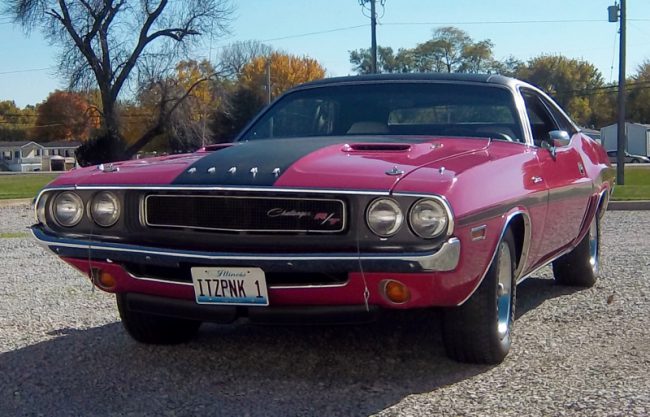
The Challenger was Dodge’s first pony car. And kind of late to the party for Dodge Division, having made due with the intermediate Charger from 1966-69 while Plymouth got the Barracuda early as a fastback Valiant mere weeks before the vaunted Ford Mustang’s debut.
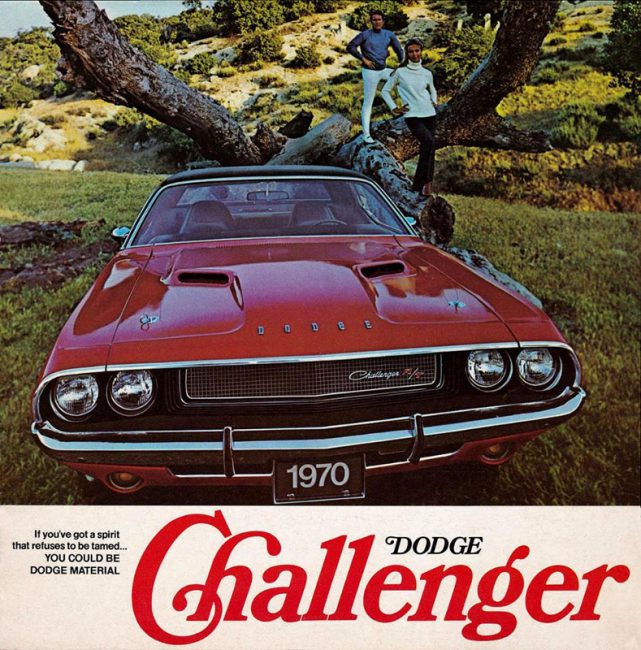
But unlike the 1970 Barracuda, the Challenger was meant to be more in the Mercury Cougar vein, more plush, with a longer wheelbase and luxurious models like the Special Edition, with its limousine-style rear window, overhead console and plusher upholstery. Plymouth also offered an upper-crust version, the Gran Coupe.
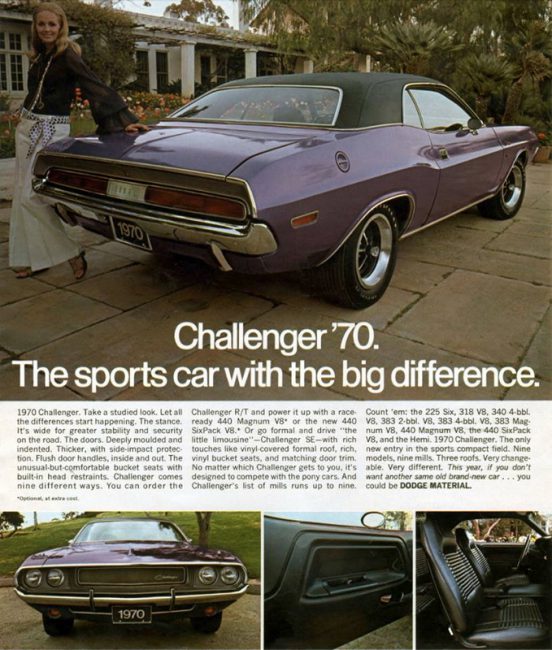
But of course, it was the last salad days of the muscle car era, and so many hot versions were on offer too. And that’s where the primary focus was in marketing and advertising. How could it not? A Slant Six was the standard engine on a base Challenger, but all manner of performance options were available to those with the cash and the desire for door-sucking power!
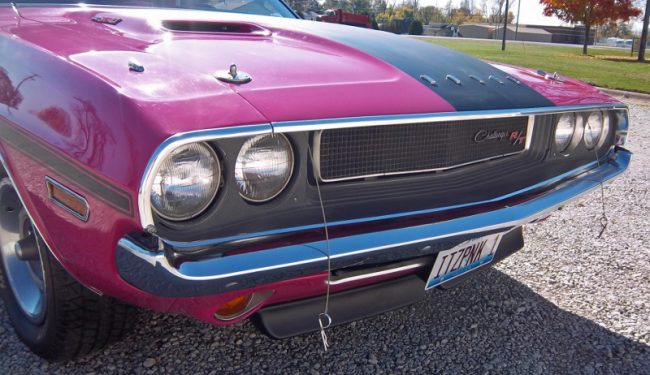
You could start out by ditching that Slant Six and replacing it with a “cooking” 318. One step further up the rung was the 340 V8. That engine was likely the best blend of performance and handling. But for the true dragstrip fiend or plain old-fashioned out-and-out straight line performance, there were the big blocks.
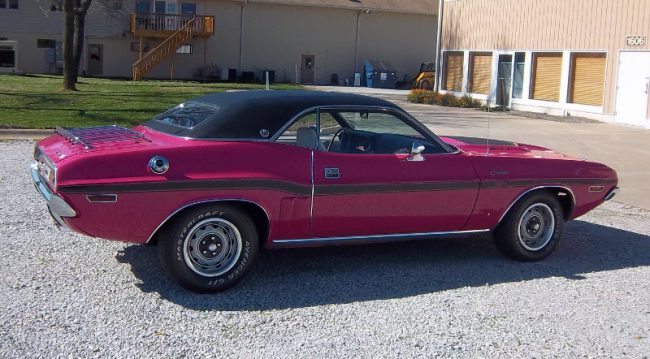
How much power? How much you want, bub? Depending on your needs and cash flow, you could get a 383, 440, 440 Six Pack or even the mighty (and pricey) 426 CID Hemi V8. Fuel economy, you say? Bah! Go buy yourself a Valiant!
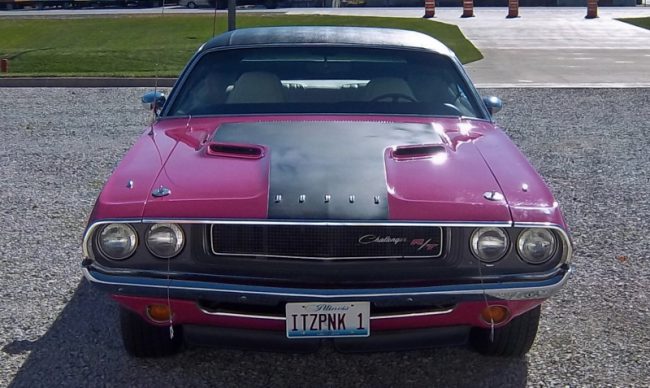
While he owned the ‘cuda, my brother and I always had friendly arguments about which E was best. I liked the Challenger better, with its four-eyed nose, fancier door panels and seats, longer wheelbase, and full-width taillamp/backup lamp assembly. Andy always defended the Barracuda’s more brutal, purposeful look.
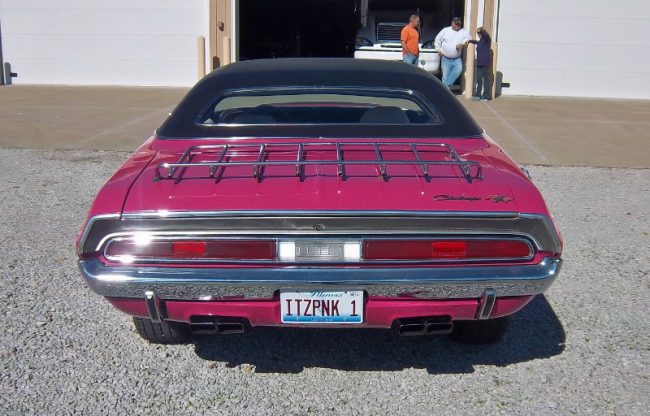
I especially loved those taillights. So smooth and sleek, with chrome “DODGE” letters inset into the central back-up light. A touch of class, compared to the Barracuda’s slatted square units.
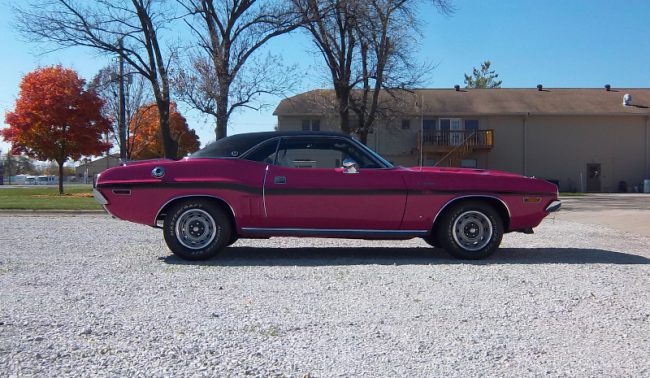
I think the extra wheelbase made the Challenger sleeker from the side too.
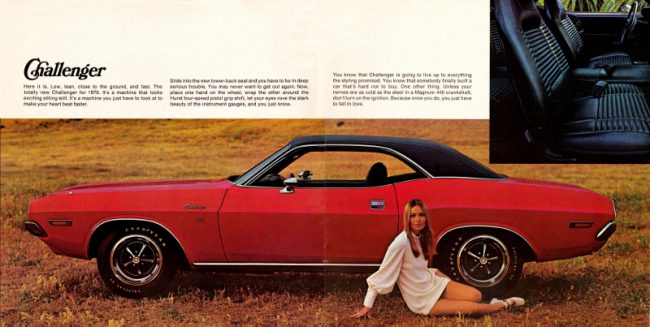
As you would expect, the Challenger R/T was a member in good standing of Dodge’s Scat Pack, along with the Coronet R/T, Super Bee, Dart Swinger 340 and Charger R/T. Standard features of the R/T included a 383 CID V8 engine with four-barrel carburetor, Rallye instrument panel with electric clock and tachometer, Rallye suspension with a sway bar, heavy-duty drum brakes (front discs were optional), F70 x 14 raised white letter tires, R/T emblems, and your choice of full-length stripe (as seen here) or a “bumblebee” stripe circling around the trunk lid and rear quarters.
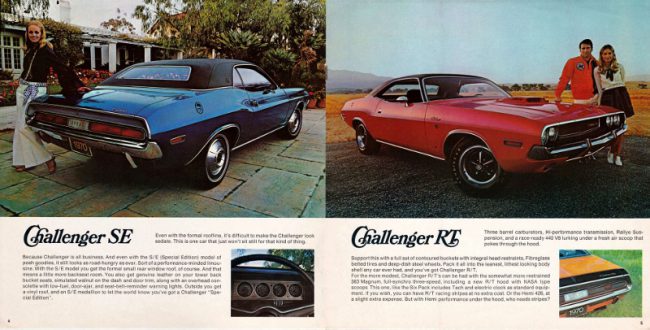
But for those wanting a little Brougham in their muscle machine, creative folks with a fat budget could combine both the R/T and plush Special Edition packages, making a very nice boulevard cruiser/stoplight dragster, the Challenger R/T SE.
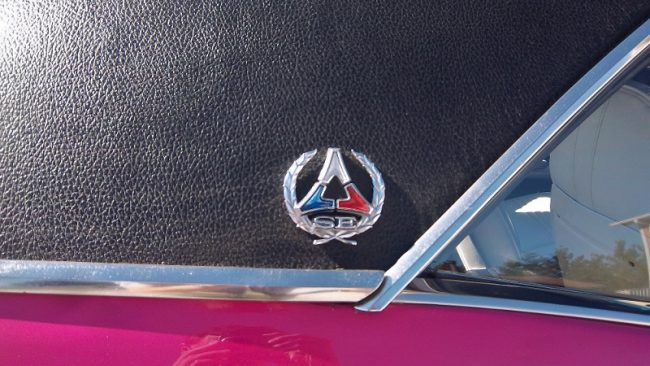
Today’s featured car, impossible to ignore in pink with black top and white buckets-and-console interior, belongs to my boss, Kathy Mosley. It is only one of many classic Mopars she and her husband Greg own. Some are Kathy’s, and some are Greg’s, and some are both of theirs. But, the Panther Pink Challenger is most definitely Kathy’s! Don’t feel bad for Greg though, as he has a Limelight ’70 Challenger R/T with no vinyl roof and the rare Chartreuse bumblebee stripe! They also have Dick Landy’s Dodge, the famous blue and white ’67 Coronet R/T drag car. Yes, THE car. More on that at a future date!
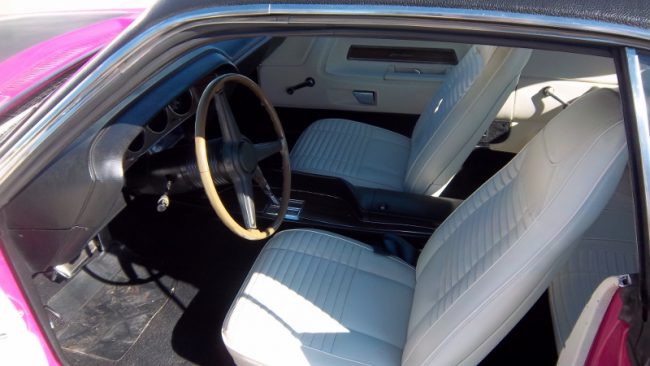
But this car was the first one that really stopped me in my tracks. Perhaps because it was unexpected. I was at the office, and walked downstairs into the shop, when I saw this car for the first time. Wow! The combination of this one, with the black vinyl top, and black stripes, with the white interior really was striking. And what’s that emblem on the C-pillar? Yep, it was a Special Edition too.
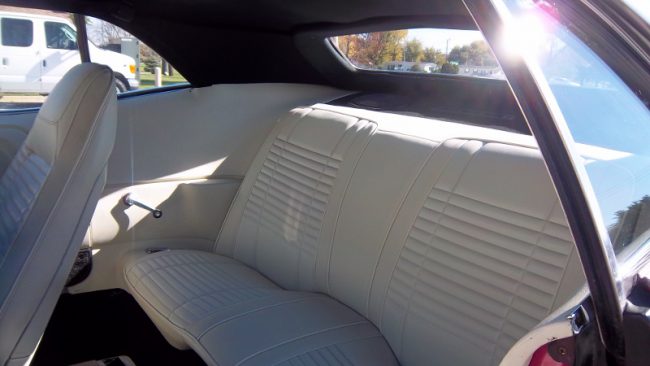
As you can see in the photos, with the overhead console, “SE” crests on the sail panels and the limousine-style backlight.
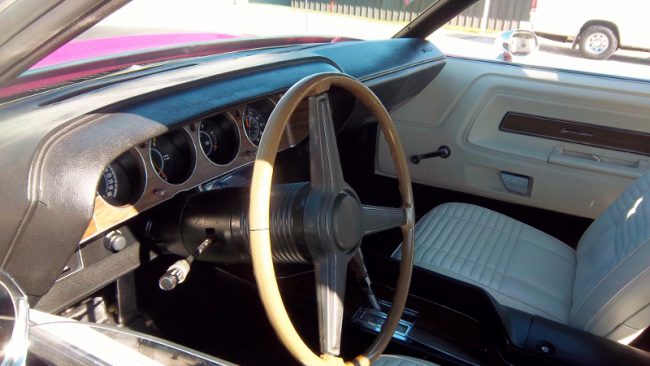
These colors just look right on a muscle car, in my opinion. It looks good. Very good.
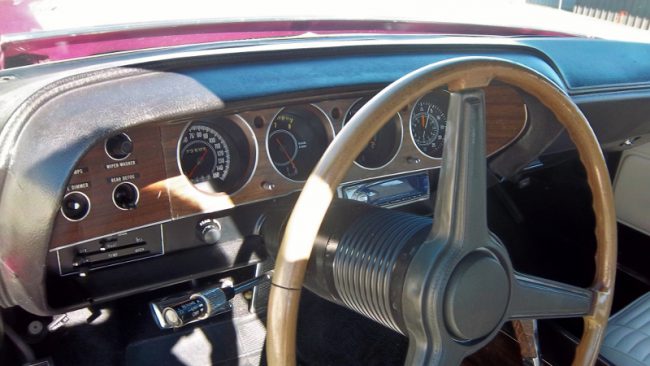
Kathy purchased this car around 2004, off of the electronic bay. Apparently the seller was a bit of an odd duck. While the car was truly an original Special Edition (one of 6,584), it may have had the R/T equipment added at a later date. Kathy didn’t really care at the time, she just loved the colors. The car was in mostly good shape, and they got it for a fair price, fair enough to mitigate any deviations from how the car left the factory.
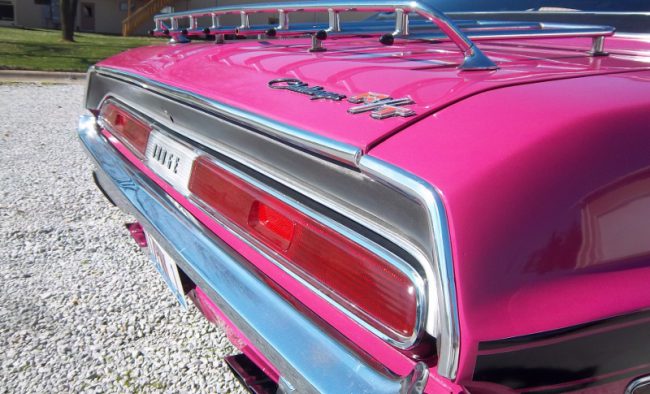
It is not the most perfect example in their Mopar collection, but Kathy likes it because it’s a good driver, it’s got that 440 power, and, best of all, it’s pink! Her dream E-body would be a 1970 Hemi ‘cuda factory painted in pink, and while they have some rare cars (like the original Hawaiian drag car, for one), a factory pink Hemicuda would still be a challenge to acquire, as I believe only two were made in 1970!
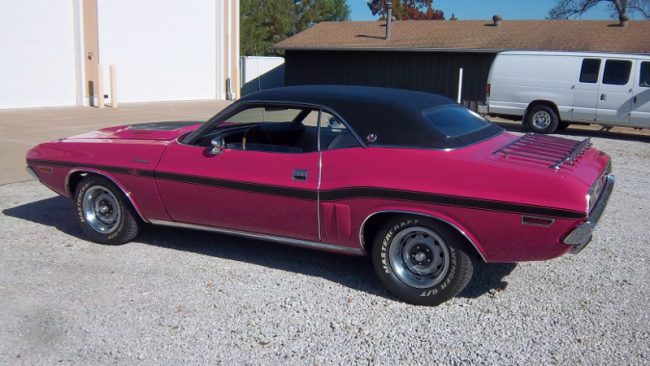
While the Challenger and Barracuda were well styled and clearly had as much power available as your taste (or wallet) could stand, it debuted right on the cusp of the end of the muscle car era. It did not help that Chrysler was going through one of its periodic crises at the time. So, both Challenger and Barracuda production was less than the Highland Park execs had expected.
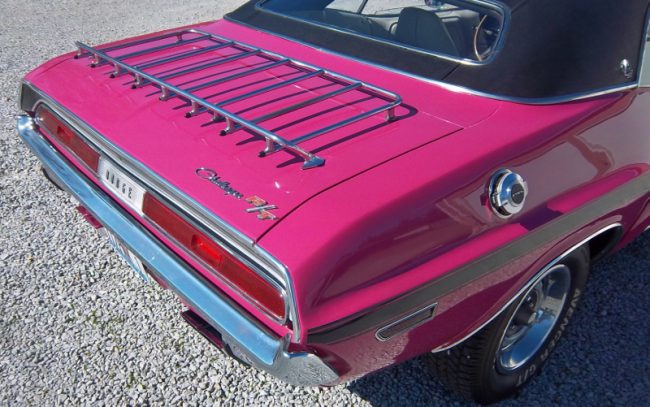
Oh sure, the sales were not terrible, but Chrysler Corporation had invested a healthy sum in these E-bodies. There were higher expectations, since ponycars had been going bonkers ever since the Mustang started it all in mid-’64. But they weren’t quite a sales smash. Only in 1970 and 1971 did production fare reasonably well, and with the death or the Hemi and high-compression V8s in 1972, Chrysler had a great looking car that was effectively de-fanged. Gone were the R/T, the Hemi, the 440. All that was left with a sporting intent was the 1972 Rallye–with a 340.
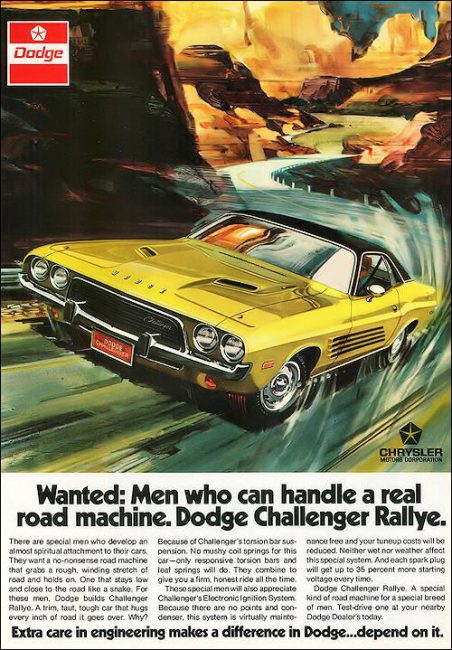
Not that the 1972-74 Challenger Rallyes were bad. Certainly they were good handlers with the big-blocks removed from the front suspension, but it just wasn’t the same for many buyers. Not gonzo enough. Most of the fun, High Impact colors were gone too. An era was ending, and the kids who bought these in 1968-71 were now starting to get married and looking at Cutlass Supremes and Gran Torinos instead. Or Charger SEs.
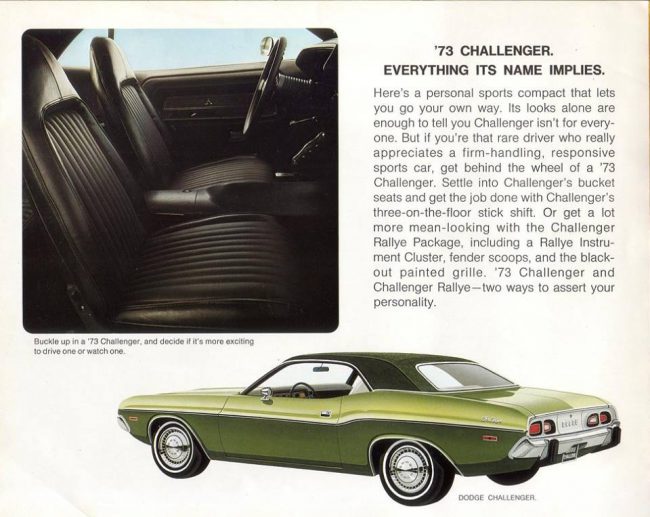
By the fourth year of the Challenger’s availability, many more buyers were interested in a cosseting ride, opera windows, coach lamps and velour bucket seats instead of serious power and bright yellow, lime green or pink paint. In that environment, the Challenger continued to sink, as its lesser siblings, the Dart and Duster and Valiant, sold like free beer at a ball game. Impending bumper and emissions regulations, combined with steadily sinking sales finally called the game, in 1974.
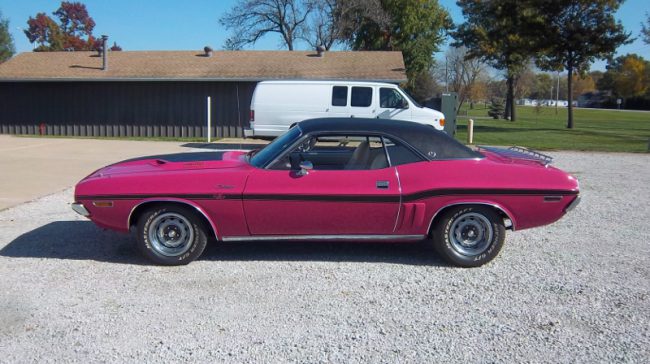
But people remembered those tire smoking, brightly hued Mopars of the late ’60s and early ’70s, and the good old Challenger made a dramatic comeback in 2008 with the limited-production SRT-8. In 2009, an SE, R/T and R/T Classic joined the lineup, and today, ever more wild and crazy Challengers have been added to the board of fare!
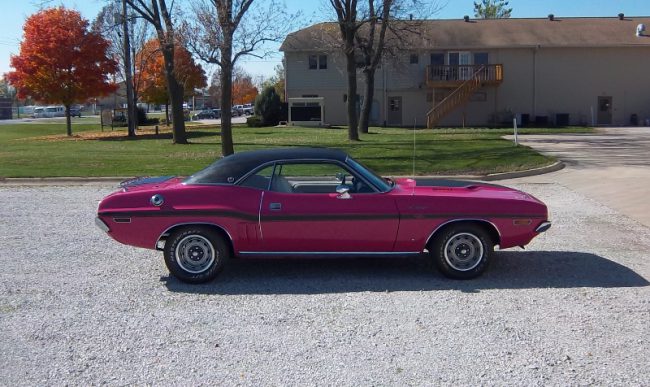







5 Comments
It was interesting the large size dictated by the big blocks was what was gone for. It so shortened the life. By the time the big blocks were gone, the otherwise excellent 340/360 had better homes in lighter Duster/Dart Sports.
In 1968, Chrysler’s Rootes group replaced the Sunbeam Alpine roadster with a miniature 68 Barracuda also called Alpine. If that could have been made in America instead with perhaps enough of a nose stretch to fit a /6. What a great home that would have been for Super /6 style upgrades on a 170, that could have kept that engine around with the base four for commuters. This car would have been much more a sensible driver than a classic muscle car, but it might have kept Chrysler in the game without having to farm it out to Japan in 1978.
I always liked the looks of these (especially in the wild colors), but I remember the build quality as absolutely terrible – the slamming of the door definitely did not convey “bank vault” structural integrity. The 1971 Mustang redesign had the same quality problem, but didn’t look nearly as good as the E-Bodies. No wonder the Camaro and Firebird grabbed pony car share during this era.
My V6 Challenger I think is a reasonable equivalent to a Challenger 340, its not the Hellcat or Superbird that no one can afford anyway, but its respectable. Jack should feel free to trade the Accord for one of these as a daily, fit and finish is meh but they are dead reliable. I tested the 0-60 meter and came up with 6.1 seconds. Not bad.
It was a 73 Challenger that I bought in 78 that converted me to the MOPAR faithful. It was a 340 4 speed that had been built to within an inch of it’s life. 12 to 1 compression, Holley 750 double pumper, radical cam that didn’t do squat until about 3000 rpm. It was a handful, but shamed more than a couple big blocks from various manufacturers. Don’t get me wrong, I love me some big block’s for the torque and driveability, but that 340 was a high winding, high strung hoot to drive. About a year after I bought it, I sold it to a younger guy in town, who within a month totaled it in an “off road” adventure. At an estimated 70-80 mph, he lost control on a back road, quite likely drunk. He lived, but was never the same.
As for the slant six; In 1994 I bought 2 cars from an elderly lady who was a neighbor of a lady I was dating. One car was a 67 Belvedere with 170 slant six and 3 on the tree. It was a bottom rung stripper that had zero options, not even a radio. The other car was a 70 Barracuda, not a ‘Cuda, in Top Banana yellow with the 225 slant six and a Torquefight. Power steering and AM radio were it for comfort items on that one. Story was; the Belvedere had been her never married sisters car, since passed away. The Barracuda had been her and her husbands only new car they ever purchased. Her husband had passed in the mid 80’s and she was no longer driving due to complications of diabetes. Her daughter and son in law had no interest in the cars, so I made her an offer on both. The Barracuda was no ball of fire accelerating, but was able to easily cruise at 70-75 mph. In 2004 I took the Barracuda to a MOPAR show at Atlanta Dragway where a gentleman became infatuated with it. He finally offered me what I thought was stupid money, even tho it was a rare combination of base car and “high impact” color, and became the new owner. I still have the Belvedere and it still shows only 101,000 miles. Runs like a champ and probably will forever. I believe there is truth in the statement that; If there was a nuclear war, the only survivors would be cockroaches and slant six MOPARS.
Funny you published this, because just yesterday, I watched “Lasting Impact Of The 1970-1974 Dodge Challenger” the the you tube: